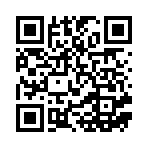Chapter 20 – Best Sidekick Ever
One of the advantages of being a promiscuous phone buyer is that you sometimes find legendary phones in unlikely candidates. Case in point: quite on a whim I picked up a Danger hiptop — also known as “Sidekick” in the USA — and ended up using it for more than two years.
The original hiptop didn’t even have a camera; for tiny, blurry photos you had to buy a separate accessory that plugged into (of all things) the headset jack. But its innovative design provided ample room for a near-perfect qwerty keypad. They might well have called this phone the fliptop, as the keys were hidden beneath the screen until needed. To access them you’d simply flip the screen panel out — a combination of magnets and a sturdy hinge would make it pivot a full one hundred and eighty degrees, snapping into the open position with a satisfying click. It never failed to impress, myself included.
The second generation hiptop2 added a built-in 320×240 pixel camera with flash, still fixed-focus and well behind the times but better than nothing. Amazingly, the flip-out screen now sat flush with the rest of the phone when closed; this meant that the keypad was set in a bit deeper than before, but no matter — it was still a joy to use. And navigating the Danger OS was a breeze thanks to four humongous buttons surrounding the screen. Plus a scrollwheel. Plus a four-way directional pad that doubled as the earpiece, of all things!
As great as the hardware was, it wasn’t the hiptop’s stand-out feature. Like BlackBerry’s Internet Service, data on all hiptops was routed through a central server to optimize bandwidth and ease congestion on carriers’ networks. But unlike BlackBerry, Danger’s solution offered two significant advantages for the user. The first was unlimited data — that’s right, all you could eat for a mere twenty Canadian dollars per month. Web browsing, emails with attachments, instant messages… didn’t matter what it was, it was all included. So long as you weren’t roaming internationally you’d never have to pay anything more than the standard monthly fee. Of course, when you were travelling the hiptop was a terrible choice. Data was an all-or-nothing proposition, a hard lesson I learned after racking up over two hundred dollars in roaming charges when I turned my hiptop2 data on over breakfast one morning in the UK.
The persistent Internet connection provided another benefit for hiptop users: with every device came a free web portal where personal data and emails were stored. You didn’t have to worry about syncing data to any one desktop computer; so long as that computer had a web browser you could access everything on your hiptop from there. The portal also featured a webmail client, and since hiptops supported multiple push email accounts you’d need never worry about BlackBerry envy.
The price for all this convenience was learned later, when it was time to get my data off of the hiptop servers. Danger sold a plug-in for Microsoft’s Outlook called Intellisync, which gave me a local copy of my address book on a Windows computer. Photos could be downloaded individually from the hiptop web portal, but calendar entries, notes and to-do items had to be transcribed by hand if I wanted to keep them. And I did.
Danger’s proxied data service was similar in another way to BlackBerry’s BIS: It went down a lot. It happened often enough to be a familiar pain, rendering the device all but useless except for phone calls and SMS. I would always know when the data service came back up; my hiptop would vibrate with a loud grunt as everything on it was restored.
Still, my hiptops were fantastic devices, right up there with the best smartphones I’ve ever had. My hiptop2 was dependable enough to survive two weeks in Uganda in 2005. Though I had no data there I found a way to post short dispatches to my blog via SMS. Part of that trip was a three-day journey to and from the Bwindi Impenetrable National Park to see gorillas in their natural habitat. I can still remember spotting the first cell tower on the long drive back, and firing up my hiptop to let the world know that I was still alive.
That same hiptop was memorable for another, more dubious achievement. It holds the first and so far only breakup text I’ve ever received. Ouch.


